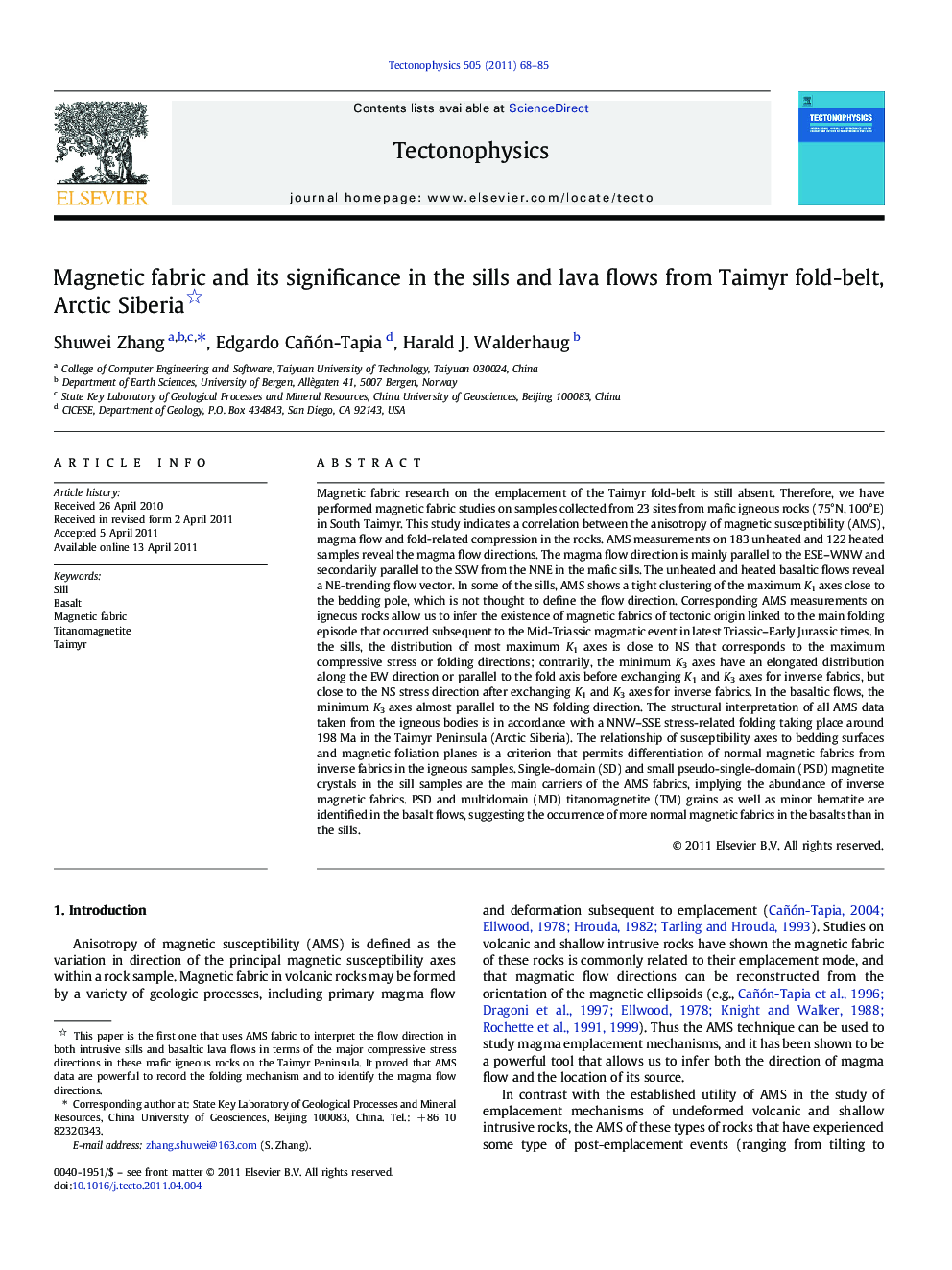| کد مقاله | کد نشریه | سال انتشار | مقاله انگلیسی | نسخه تمام متن |
|---|---|---|---|---|
| 4693115 | 1636844 | 2011 | 18 صفحه PDF | دانلود رایگان |

Magnetic fabric research on the emplacement of the Taimyr fold-belt is still absent. Therefore, we have performed magnetic fabric studies on samples collected from 23 sites from mafic igneous rocks (75°N, 100°E) in South Taimyr. This study indicates a correlation between the anisotropy of magnetic susceptibility (AMS), magma flow and fold-related compression in the rocks. AMS measurements on 183 unheated and 122 heated samples reveal the magma flow directions. The magma flow direction is mainly parallel to the ESE–WNW and secondarily parallel to the SSW from the NNE in the mafic sills. The unheated and heated basaltic flows reveal a NE-trending flow vector. In some of the sills, AMS shows a tight clustering of the maximum K1 axes close to the bedding pole, which is not thought to define the flow direction. Corresponding AMS measurements on igneous rocks allow us to infer the existence of magnetic fabrics of tectonic origin linked to the main folding episode that occurred subsequent to the Mid-Triassic magmatic event in latest Triassic–Early Jurassic times. In the sills, the distribution of most maximum K1 axes is close to NS that corresponds to the maximum compressive stress or folding directions; contrarily, the minimum K3 axes have an elongated distribution along the EW direction or parallel to the fold axis before exchanging K1 and K3 axes for inverse fabrics, but close to the NS stress direction after exchanging K1 and K3 axes for inverse fabrics. In the basaltic flows, the minimum K3 axes almost parallel to the NS folding direction. The structural interpretation of all AMS data taken from the igneous bodies is in accordance with a NNW–SSE stress-related folding taking place around 198 Ma in the Taimyr Peninsula (Arctic Siberia). The relationship of susceptibility axes to bedding surfaces and magnetic foliation planes is a criterion that permits differentiation of normal magnetic fabrics from inverse fabrics in the igneous samples. Single-domain (SD) and small pseudo-single-domain (PSD) magnetite crystals in the sill samples are the main carriers of the AMS fabrics, implying the abundance of inverse magnetic fabrics. PSD and multidomain (MD) titanomagnetite (TM) grains as well as minor hematite are identified in the basalt flows, suggesting the occurrence of more normal magnetic fabrics in the basalts than in the sills.
► Distinctive characteristics of the magnetic signature of lava flows and sills were found.
► We documented changes in the orientation of principal susceptibility axes due to heating.
► Post emplacement stresses may control the orientation of magnetic phases formed during heating.
► Association between the Siberian traps and the Taimyr igneous suite is reinforced.
Journal: Tectonophysics - Volume 505, Issues 1–4, 3 June 2011, Pages 68–85